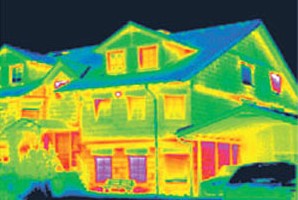Household worries
It’s June 2022. The last few years have been economically challenging for many, with Covid, Brexit, Russia’s invasion of Ukraine and the start of an inflationary cycle that is most noticeable on household energy bills, fuel for driving and groceries. Prices are already a concern, but there is good reason to expect them to get worse for gas, fuel oil and electricity, as the energy price cap that increased in April by 54% is predicted to go up a further 42% in October.
So as autumn and winter set in later this year, the cost of heating and eating will be significantly on the up. Latest government statistics estimate that 13% of homes in England (over 3 million) are in fuel poverty already [source https://commonslibrary.parliament.uk/research-briefings/cbp-8730/] and this figure could double by the end of the year. This means that families with enough income currently to choose how to spend it could have that ability taken away as prices increase. These same households, that didn’t consider themselves at risk, may also face pressure from mortgage payments as the cost of borrowed money rises – these are by no means “working class” problems.
Perhaps the biggest worry is that the worst is yet to come. This doesn’t appear to be a temporary situation that will go away as fast as it came, and learning from the experience of petrol pump prices rising, they are a lot slower to fall if/when wholesale prices settle down. Unfortunately it seems that rapidly increasing energy bills may bite for years.
What help is available for those that need it most?
Councils and Local Authorities in the UK have been mitigating the effects of local fuel povery for several years. You might not have heard about this if you’ve not needed assistance, but Warm Homes and Heat or Eat schemes are well established across the UK in different forms, but they basically look to increase household energy efficiency or subsidise energy consumption subject to available funds from central government or charitable grants.
Tubeway supply home insulation products to a number of these schemes, for draught proofing and window insulation, and in addition to these remedies, grants for loft insulation, cavity wall treatment, boiler repairs and upgrades (to name but a few) can be part of the scheme’s packages. Although some Councils are contacting households that may be eligible, why wait for this? If you want to know what help might be waiting for you, get in touch with your Council, Social Services or National Energy Action, search on the internet or if this is difficult for you to do yourself, ask someone to help you do it.
What can you afford to do yourself?
If you have some funds to spare, you are probably already thinking about improving your fuel efficiency at home. Aside from turning the heating down, wearing an extra jumper, you could consider replacing old windows and inefficient appliances, getting solar panels fitted – these measures can be costly, but over time they may repay you if you can afford to do them. But can you afford to wait, particularly as big projects take time?
If you want to do something now, that will save energy at home, you can. Ask yourself, what is the biggest thermal weakness of your property? For most people, it’s the windows and doors. Draughts are exchanging cold air from outside for your heated air from inside, and although glass is great for light, it is also losing heat. Glass windows lose approximately 10 times the heat that an insulated wall of the same area will [source www.sustainability.vic.gov.au/energy-efficiency-and-reducing-emissions/building-or-renovating/windows-and-shading/reducing-heat-loss-through-windows]. If you want to see the effects of windows and doors on heated rooms you can check out thermal imaging pictures on the internet. From the inside, they show glass usually being the coldest surface in the room, as it loses heat to the outside (this is why you get condensation on windows). From the outside it’s the opposite, the walls are cooler than windows which are generously giving up their heat to the street. Try this image for starters if you want confirmation: https://www.dreamstime.com/stock-photo-thermal-real-image-radiator-heater-window-buil-infrared-building-image70176679
How to insulate windows and doors? Secondary Glazing (magnetic, sliding, fixed, hinged) and Draught Excluders (for door frames and thresholds, letterboxes and window frames) are quick, easy to install and cost effective. Properly insulated rooms will then need heating for shorter periods, at lower temperatures, as they retain their heat much better. You’ll enjoy the difference.
Go to https://www.secondarydiyglazing.com/secondary-glazing-systems/ for more information on Tubeway’s excellent range of Secondary Glazing products, or https://www.secondarydiyglazing.com/easyfix-draught-excluders/ for Draught Excluders. The site is easy to navigate, it has many videos, product measuring and installation instructions and full information on not just heat insulation but also noise reduction benefits and condensation reduction. If you can’t find what you want on the site, contact details are available for our experienced and helpful team.
The short version…..
If you can afford to improve your energy insulation:
– Don’t wait until winter for your bills to increase again, DIY and Do-It-Now
– You will feel the benefit and it will pay you back
– Some of the least expensive methods give the best returns
– use www.secondarydiyglazing.com


